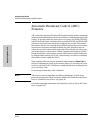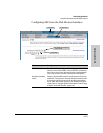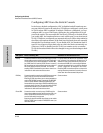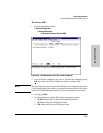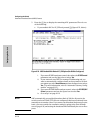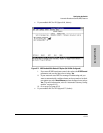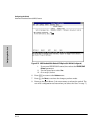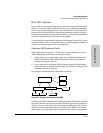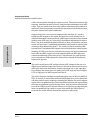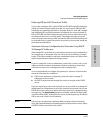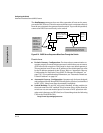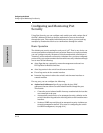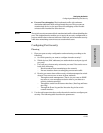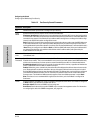
6-113
Configuring the Switch
Automatic Broadcast Control (ABC) Features
Configuring the Switch
How ABC Operates
Layer 2 (MAC level) broadcast packets can become a large percentage of the
traffic on a network. These broadcasts not only use up network bandwidth,
but also use up processing power on every client that receives the broadcast.
Routers reduced this problem by introducing broadcast domains to reduce
broadcast propagation through a network. However routers also introduced
increased costs and latency, with reduced throughput.
Using a Hewlett-Packard switch equipped with Automatic Broadcast Control
instead of using a router overcomes the latency and throughput problems at
a lower cost and with greater ease of management.
Reducing ARP Broadcast Traffic
When enabled on the switch or a VLAN, ABC does the following to reduce
ARP (Address Resolution Protocol) broadcast traffic:
1. Learns which port various hosts reside on by reading the address infor-
mation in broadcast ARP (Address Resolution Protocol) packets and
unicast ARP response packets
2. Proxy responds to subsequent ARP broadcast requests for those hosts
from other devices instead of forwarding such requests out all ports and
requiring each host to respond
For example, assume that host A has traffic for host D.
Figure 6-73. Example of a Network Using ABC
To learn host D’s MAC address, host A sends a broadcast ARP request. Because
the switch does not yet know the location of host D, it floods the request out
all ports. However, the switch also learns from the ARP request the location
of host A and stores this information in its ARP cache. Host D receives the
ARP request (as will all other hosts connected to the switch), and responds
Switch
Hub Hub
Server #1
Server #2
Host A
Host D
Host C
Host B




